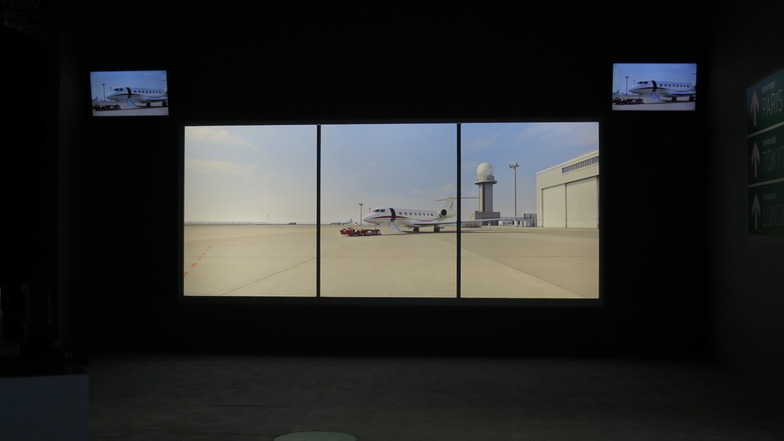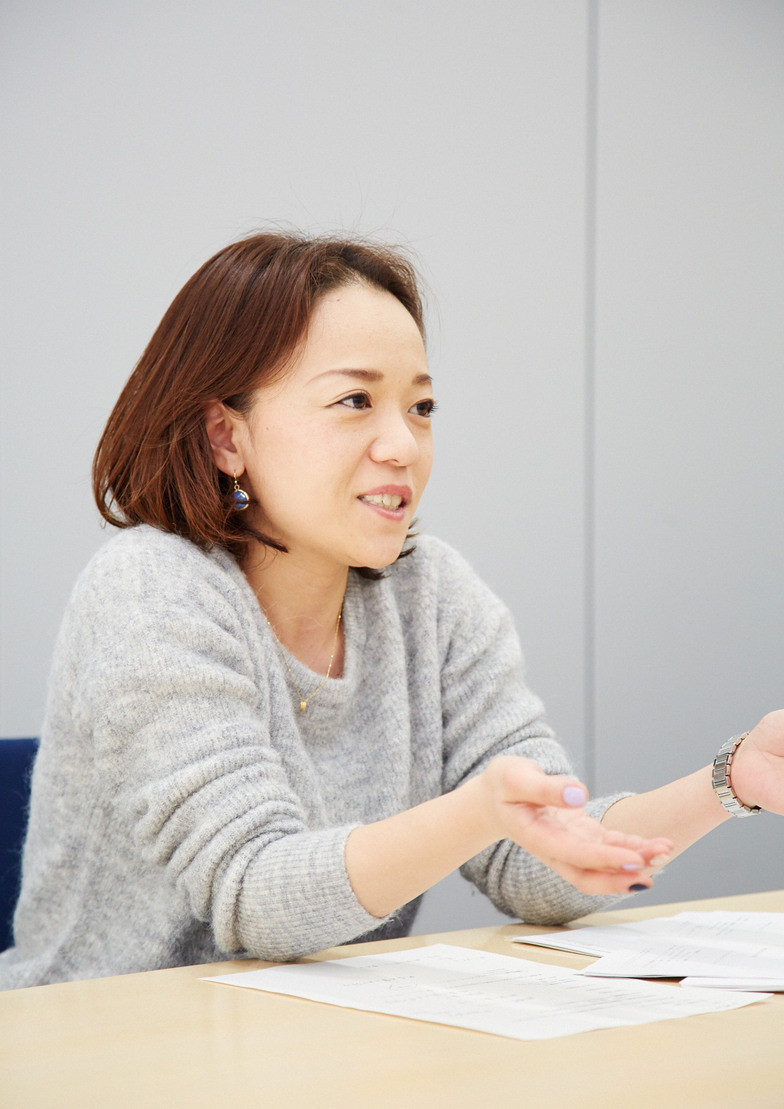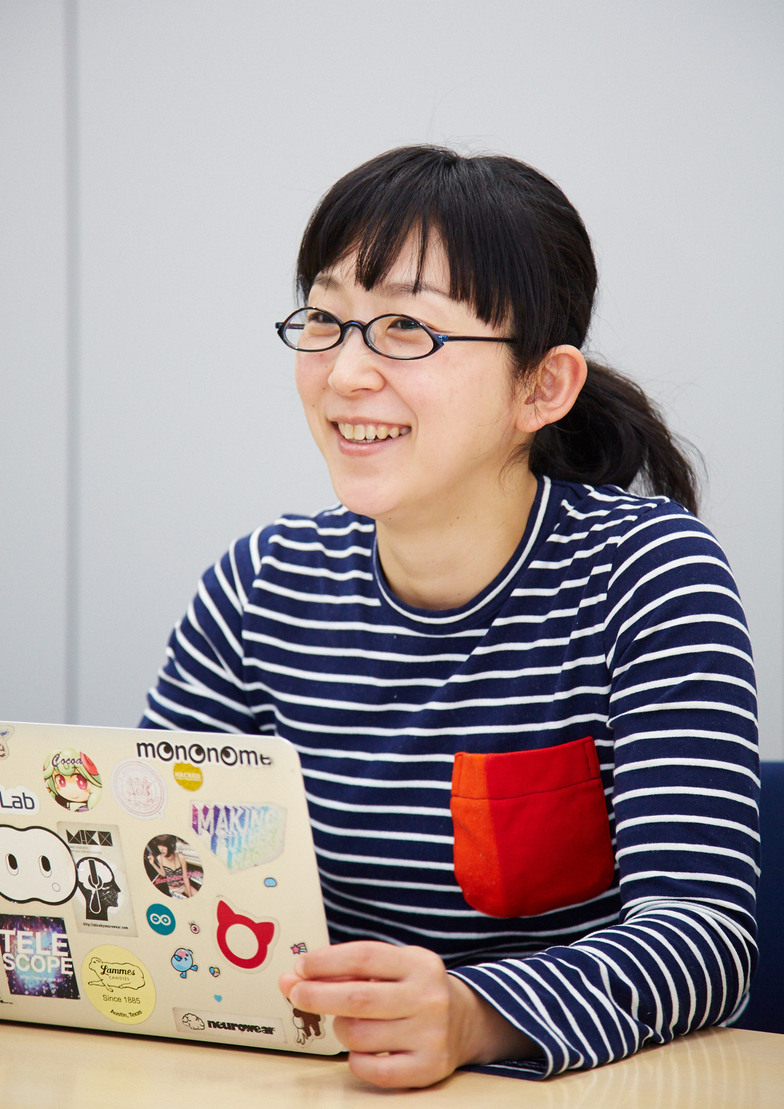Canon EXPO is a private event held by Canon every five years in New York, Paris, Tokyo, and Shanghai. In 2015, it began in New York in September, followed by Paris in October and Tokyo in November, showcasing the company's cutting-edge technologies and future vision. Hiroe Ishii from Dentsu Inc. Event & Space Design Bureau, who managed the event, looked back on the production process with Masahiko Okabe and Kana Nakanishi from Dentsu CDC, who co-planned it.
Interview and Editing: Aki Kanahara, Dentsu Inc. Event & Space Design Bureau
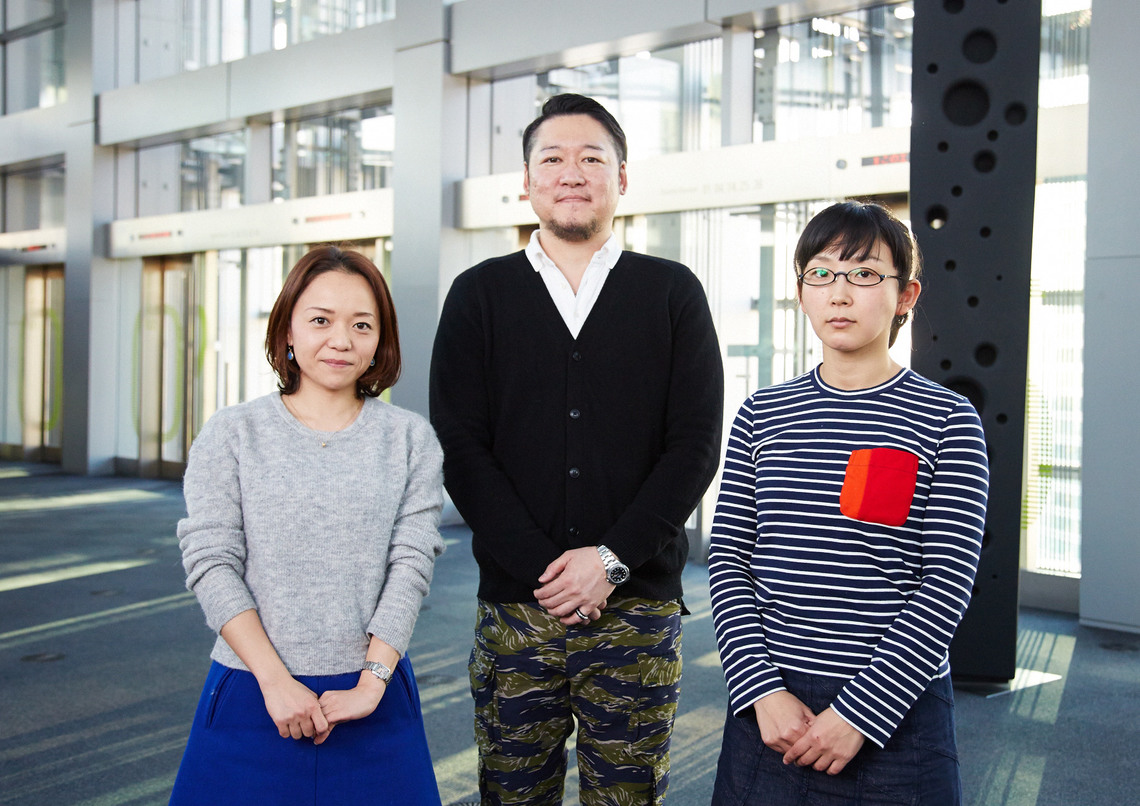
(From left) Ms. Ishii, Mr. Okabe, Ms. Nakanaka
Canon is serious about reproducing everything through imaging
Ishii: I've been in charge of "Canon EXPO" for a long time, but this time we brought the CDC team on board at a very early stage. The reason was that the client's new challenge was to promote "realism" as the next new value in imaging, following the high image quality and high definition we've pursued until now. We worked together to figure out what kind of realism a manufacturer like Canon could create.
Okabe: We were told they wanted to create something that would make visitors exclaim "WOW!" Technical exhibitions tend to be specialized, but Canon EXPO is a crucial event held every five years that points the way forward for Canon worldwide.
Canon's cameras and printers have evolved toward ever-higher resolution and image quality. While 4K TVs are now on store shelves, 8K TVs are already beyond that. We saw it for the first time this time, but 8K looks three-dimensional even on a regular TV. I imagine we'll eventually progress to 16K, 32K... Canon pursues high resolution and high image quality because we genuinely want to "recreate everything" using the power of imaging.
Photography recreates images beyond time and place, right? With video, could we recreate a U.S.-Japan teleconference so it feels like we're truly in the same room? Transcending time and space is the ultimate goal of imaging. I see that as vertical evolution. But isn't there also parallel, horizontal evolution? We initially conceived this "Immersion Museum" as a space to explore that horizontal axis – ways to enhance presence while maintaining the same image quality.
Ishii: It was about showcasing the power of imagery to evoke sensations—like a different kind of pleasure or a thrilling shiver—that moves the viewer's senses in a world beyond super-reality, into something like meta-reality.
Nakano: To be specific, the most accessible example of that physical and mental stimulation is probably the "8K Ride." It achieved a sense of floating, or movement.
Ishii: The "8K Ride" came about because Nakanishi-san introduced us to Professor Takuya Nojima from the University of Electro-Communications. We discussed how peripheral vision works with Professor Nojima, and the video team shared those insights to create it. Apparently, peripheral vision actually feels closer to reality, even when things are blurry. That's how the brain actually works.
Nakano: It seems the human eye fundamentally works differently in the center versus the periphery. In peripheral vision, we basically track movement, but we don't actually see clearly. We started with the hypothesis that if we used the side screens solely to convey a sense of motion, it might actually result in a better product.
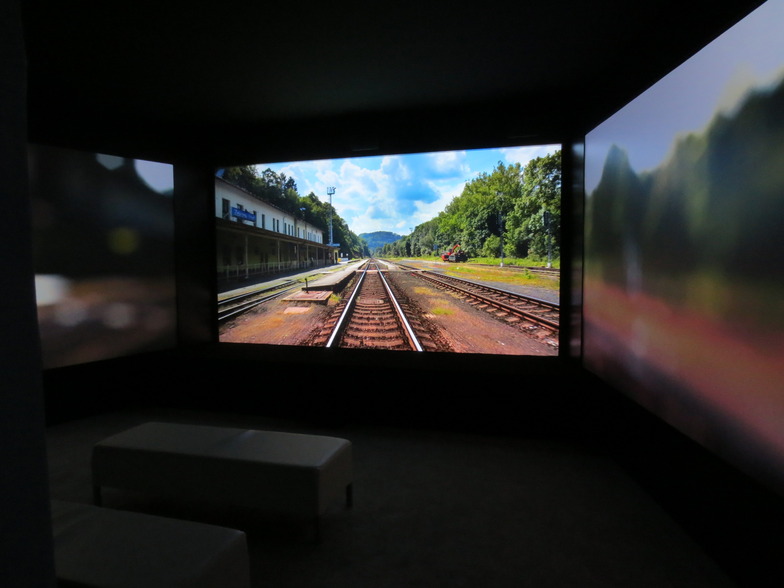
【8K Ride Experience】 A three-screen theater where diverse landscapes flow by from a first-person perspective
The front 8K image with its sense of depth makes you feel like your body is moving forward
Okabe: I think the airport photos turned out really well. "Realism" – literally translated, it's "reality" in English – but reality has multiple layers. When you go to high places, you get that sudden chill, that floating sensation, right? So, showing high-altitude imagery and recreating an environment close to that tricks the brain. It's a switch to recall learned experiences. Then there's another level above that—where the brain misinterprets something it hasn't experienced but imagines must feel a certain way. The airport falls into the former category, while the 8K Ride leans more toward the latter, tapping into the brain's physiology.
Ishii: The real challenge this time was whether we could truly create sensations that feel pleasant—or even unpleasant—and whether we could genuinely fool the viewer's eyes.
Nakano: We had to avoid making it look like a printed trick art piece. Simply adding "window frames" to a nice print doesn't actually create realism. But if you install real glass windows and get the lighting just right, it looks like it's genuinely there.
Okabe: We wanted visitors to stand a certain distance away from the printed photos. We worked with Canon, discussing and experimenting with ways to present it with realism. It was a battle over how to stimulate the viewer's eyes and brain mechanisms, so it became fascinating human observation and discovery.
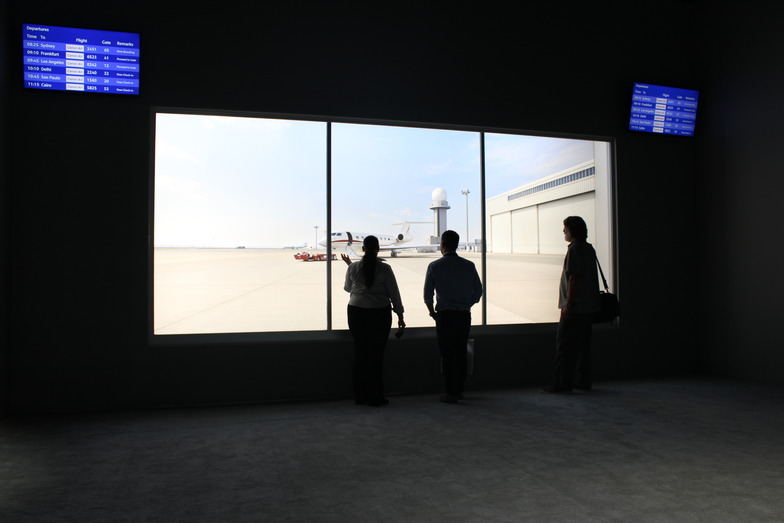
【Imaging Airport】 The exterior view of the airport reproduced with ultra-high-definition prints
Ishii: Until now, displaying photos or prints behind glass was an absolute taboo, precisely because it meant showing them properly. This project succeeded precisely because it aimed to introduce a new value—a sense of presence—and expand the possibilities of the images and imaging Canon creates. I truly believe we were able to compete on the level of human senses, on the level of essence.
Nakano: When you look through the telephoto camera, the print is so detailed you can even see the small "welcome" written on the maintenance tow truck pulling the aircraft. Everyone crowded around, starting to look and saying, "Is this real?" The glass got covered in nose grease, so the scene was pretty chaotic (laughs).
Ishii: Apparently, a few people bumped their heads, and there were concerns like, "The glass might break, it's dangerous!" At CES recently, it was basically a VR (virtual reality) festival everywhere you looked. But it really made me realize again that it's an experience for just one person. Even if you're watching the same content, there's no sense of sharing it. I think the shared experience at the airport and the "8K Ride" managed to differentiate themselves on that point.
This time, using Canon's handheld display and really focusing on sound was incredibly impactful. It enhanced the value of the visuals while delivering sound clearly. Immersion isn't just about sound; it includes smell, touch, and vibration too.
Hyper-realism isn't just Canon's theme; there's an industry-government collaboration forum, and research is advancing toward 2020. Beyond individual experiences, research into methods for enhancing public immersion will likely progress rapidly.
Canon's 8K video expresses overwhelming hyper-reality
Ishii: At CES in Las Vegas this January, Canon was apparently the only company showing 8K content.
Nakano: 8K input is still challenging, isn't it?
Okabe: When I first saw 8K live at Canon EXPO, I initially thought, "Since we're seeing image quality better than what humans normally perceive, it should appear three-dimensional." I wondered if, since it exceeds the limits of human visual perception, it would just look the same to our eyes. But you can see it! Three-dimensionally! For example, you see Nakano-san in the foreground, me in the middle ground, and a wall in the background – it feels like three distinct layers of depth are lined up. When you look through the magnifying glass, you can even read all the text in books at the library. It's amazing, right?
Nakano: The amount of information is enormous.
Okabe: It puts a tremendous load on the brain. If my home TV were 8K, I don't think I could just lounge around watching it (laughs).
Ishii: 8K only has 33 million pixels, in terms of pixel count. But if you take a printout from 8K footage, you can see the hangnails on an actor's fingernails. Even someone with incredibly smooth skin—you can see every single fine hair. It gives the footage a real three-dimensional quality. Actors have it rough.
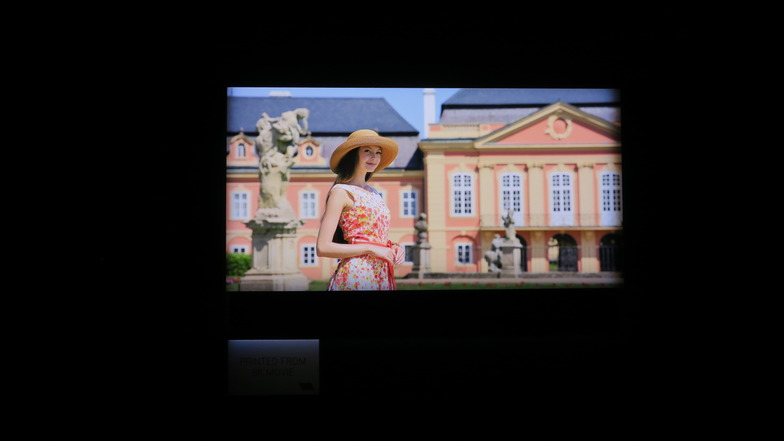
Prints cut from 8K footage express the texture of details too
Nakano: We couldn't do it this time, but I want to test if the amount of saliva produced differs between 4K lemons and 8K lemons (laughs). Maybe put cotton wool under the tongue and measure the grams for each.
I also want to test yawning. You know how yawns are contagious? Apparently, yawning spreads more easily when empathy towards people is activated. That also means having empathy for the content, so it should be essential for boosting the experience.
Okabe: So, to use your example, the higher the image quality, the more tear-jerking a movie should be, right?
Nakano: That's the hypothesis.
Okabe: But what if the opposite is true? What if improving picture quality actually reduces contagion, meaning tear-jerking movies would be better with lower resolution?
Nakano: I actually think that's true too. If things get too beautiful, it can feel detached. It feels like when people are portrayed too dramatically, it creates distance. Maybe you just need to get used to it.
For example, there's a startup called OriHime making avatar robots. They create robots placed in homes for children in hospital rooms to communicate with their families. These robots don't have the person's actual face; they're like Noh masks, with only eyes. That makes it easier to project emotions onto them. It would be wonderful if we could choose the optimal imaging technique based on the application.
Beyond Super Reality and Metareality lies the realization of Beyond Reality
Okabe: Research and technology focused on the recipient side will become even more closely integrated going forward.
Ishii: As telecommunication and electronic conferencing systems advance, we're already in an era where video conferencing can truly capture the unspoken nuances of eye contact between people, or where hiding things becomes impossible. In our work too, we can start envisioning how using this could significantly enhance meeting effectiveness and quality.
Okabe: It's often said that a five-minute face-to-face meeting conveys more than an hour on the phone or in a video conference. It would be great if imaging companies like Canon could create situations where distance truly causes no loss. Companies wouldn't even need to be in the same building.
In healthcare too, imagine being able to check on a bedridden grandmother daily through video. Creating new technology and exploring what new possibilities it unlocks—that's what will be increasingly demanded, isn't it?
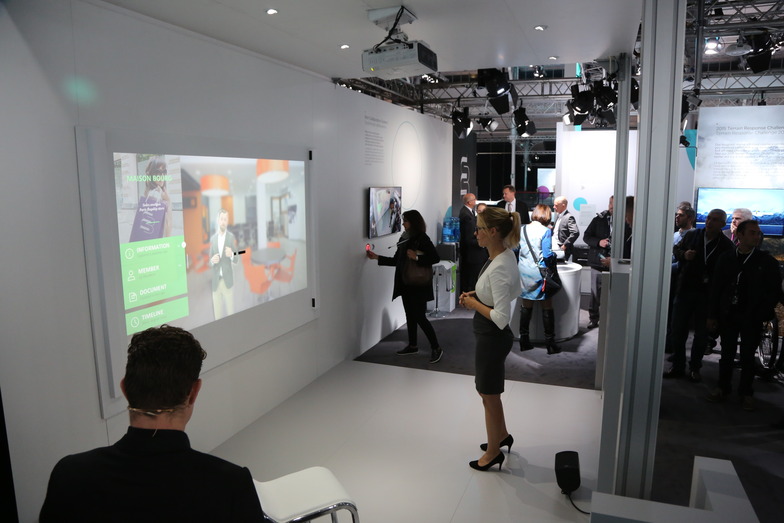
Development technologies to enhance remote office communication with higher quality and comfort were also showcased.
Ishii: We need to think about services and solutions too—what we can propose going forward.
Nakano: While we've achieved super-reality with high-definition, high-fidelity visuals that feel as if they're right there, and metareality that moves viewers emotionally as if it were real, our next goal is to reach beyond reality—enabling experiences impossible in the real world.
Ishii: The original proposal even included ideas like creating a world of flying carpets through aerial photography, or walking through a flower field feeling like an ant. We'd love to challenge ourselves with that in the future!
<End>







